How To Pest Proof Your New House Before Moving In
There is a lot to consider when you buy and then move into a new home.
You might want to change the paint color. And maybe the carpeting in the family room could use a thorough cleaning. You probably also want to take down some curtains that don’t match your decor. The list continues to grow and grow.
Guess what? You’re not the only ones who sees your home as a place they can call their own. Yes, bugs are on the hunt for a new secure location to find water and food, as well as safely make bug babies.
That means that food you just unpacked into the pantry smells pretty good – not to mention the safe shelter you provide in your cozy home.
As you buy a home, you may not know what lurks in your new abode – whether you just built it or are buying an existing home. And, trust me, bugs don’t know the difference.
Let’s look at how to pest proof your new home so you can feel confident you’re not moving in with the enemy.
Tips For Optimum Pest Control Before Moving Into a New House
Just like you might be looking for a bigger home for your growing family or looking for something in a better neighborhood or nearer to your child’s school, insects are also out searching.
They crave the safety, security, warmth, and pantry full of food we have. You actually kind of feel for them … almost. After all, it’s not like they ask for your permission to steal a corner of your basement or nest in your walls.
Use This Tool to Compare Your Local Pest Control Companies
Spring brings new blooms and fresh air and a bevy of folks selling and buying real estate. But it also brings out the bugs. And you want to make sure you don’t move you, your family, and all of your belongings into a pest’s den.
Check out these key ways to pest proof your home so you can sleep easier knowing you’ve kept bugs at bay.
1. Yard Cleanup
Bugs, naturally, come from the outdoors in. And, most times, they like to hang out in debris or warm, damp, dark places where they can hide.
Think leaf piles, branch and twig piles, firewood stacks, any outdoor trash. If any of these are near your home, getting inside is just one more step away.
How to keep pests out of your house involves cleaning up outdoor areas so pests aren’t more tempted to move easily indoors. We mean raking leaves, trimming trees, collecting and disposing of trash in sealed containers, and moving those firewood stacks at least 20 feet from your home.
2. Home Cleanup
To insects or mice, imagine how good your home smells and feels. Fresh food, water, and crumbs – it’s like a smorgasbord for bugs.
In fact, this is made worse if food is continually left out or spills aren’t cleaned up, this is a bigger draw for bugs.
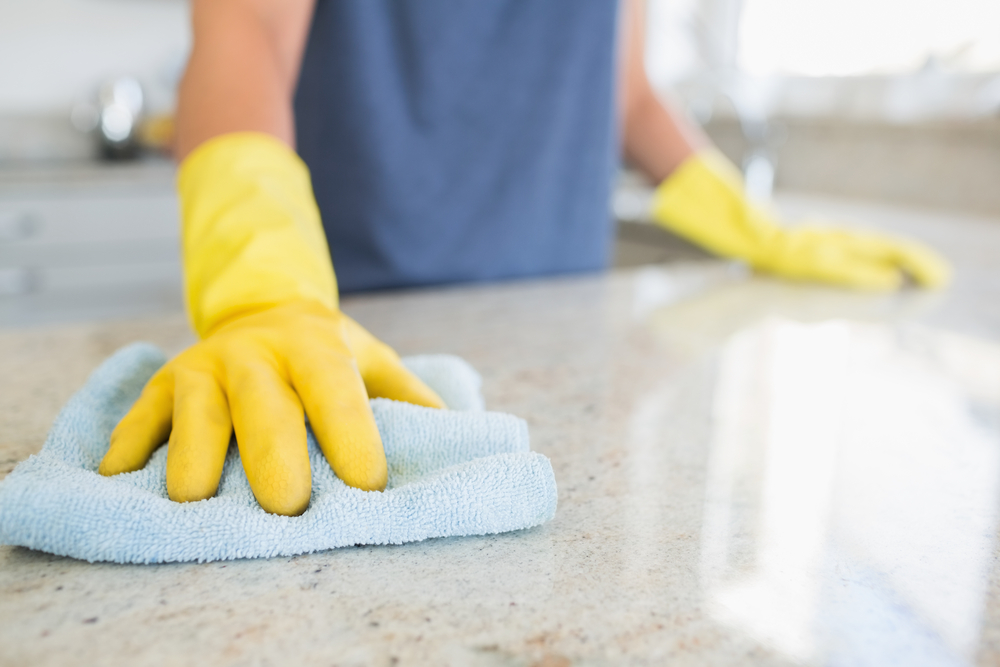 So, before moving into your new home, pest proof your home by giving it a thorough cleaning. You don’t want to inherit pests in a moving transition because the previous owners didn’t clean up like they should have as they were moving out.
So, before moving into your new home, pest proof your home by giving it a thorough cleaning. You don’t want to inherit pests in a moving transition because the previous owners didn’t clean up like they should have as they were moving out.
Then, when moving it, remember to store all food in sealed, plastic containers, including pet or bird food. Clean up floors regularly so they are crumb- and spill-free.
3. Manage Pests Before Moving In
During the building of a new home, the construction phase is when your home is actually most open to invaders. Then you finish building the house around them and close them in.
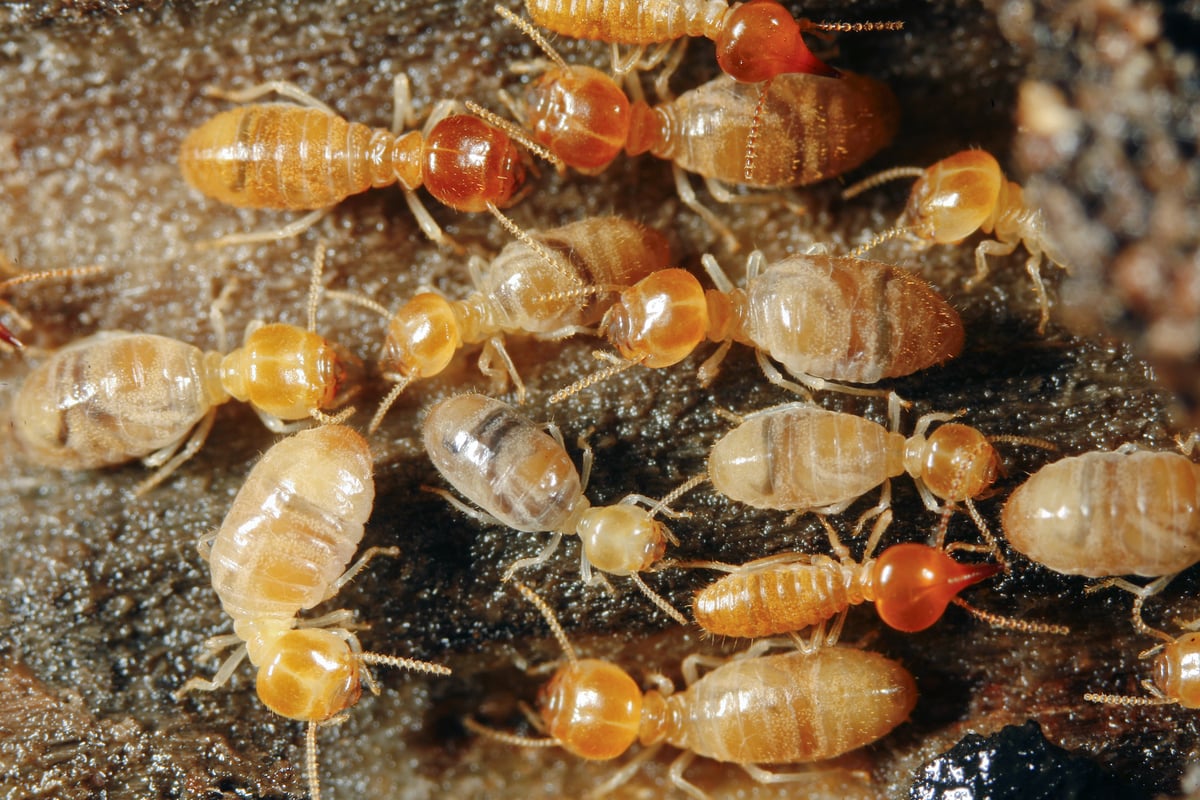 So if you’re concerned about pests before moving into your newly built home, you can have an inspection and interior crack and crevice spray done beforehand to ensure pests are managed. We’ve found mice, ants, and other general insects like spiders, crickets, earwigs, and silverfish in newly built homes.
So if you’re concerned about pests before moving into your newly built home, you can have an inspection and interior crack and crevice spray done beforehand to ensure pests are managed. We’ve found mice, ants, and other general insects like spiders, crickets, earwigs, and silverfish in newly built homes.
If you are moving into an existing home, you might notice some suspicious things during your home visits before moving in. Maybe in an attic you notice some mouse droppings. Maybe you saw mouse traps in the garage.
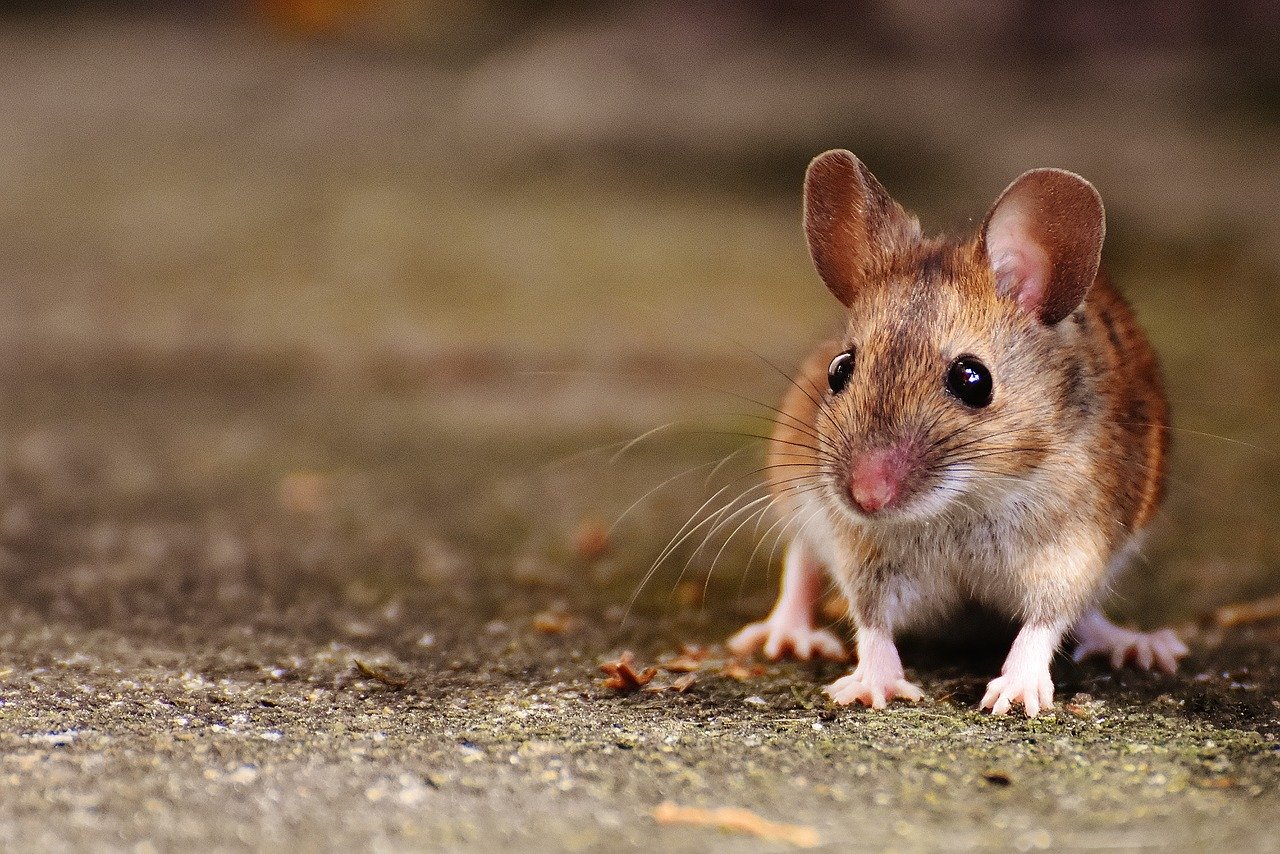 Those two things give you two different stories: The one is a pest problem that may not be managed and the other a pest problem potentially under control. Having a professional pest control inspector look at your home before you move in ensures whether there’s been any pest problems present and whether they are being actively managed. While seeing a mouse trap in a house you want to buy may be concerning, it’s actually a good sign that the previous owners were on top of any pest activity and actively trying to control bugs.
Those two things give you two different stories: The one is a pest problem that may not be managed and the other a pest problem potentially under control. Having a professional pest control inspector look at your home before you move in ensures whether there’s been any pest problems present and whether they are being actively managed. While seeing a mouse trap in a house you want to buy may be concerning, it’s actually a good sign that the previous owners were on top of any pest activity and actively trying to control bugs.
What you don’t want is to move into a home with an active pest issue. Seeing fresh droppings or even the pest itself is certainly a sign of something still present. Bringing in pest control before moving into a new house can ensure your pest problem is recognized, identified, and managed before it becomes a bigger issue.
4. Crack, Crevice and Barrier Maintenance
One more thing you can do once pests are managed or confirmed not present in your property is to make sure bug superhighways into your home aren’t left wide open.
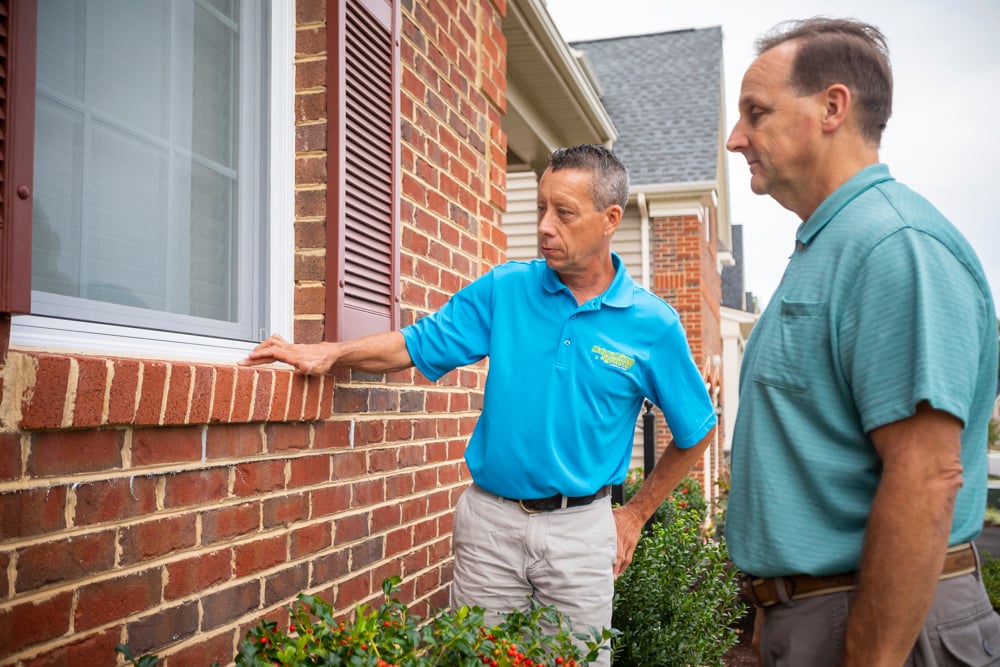 Sealing any cracks or crevices around your foundations, windows, basement, siding, and insulation can keep bugs outdoors where they belong.
Sealing any cracks or crevices around your foundations, windows, basement, siding, and insulation can keep bugs outdoors where they belong.
On top of that, a quarterly perimeter pest control treatment outdoors can help pest proof your home. These applications last approximately 3 months and they ensure nothing gets through, particularly as temperatures rise and pest activity increases.
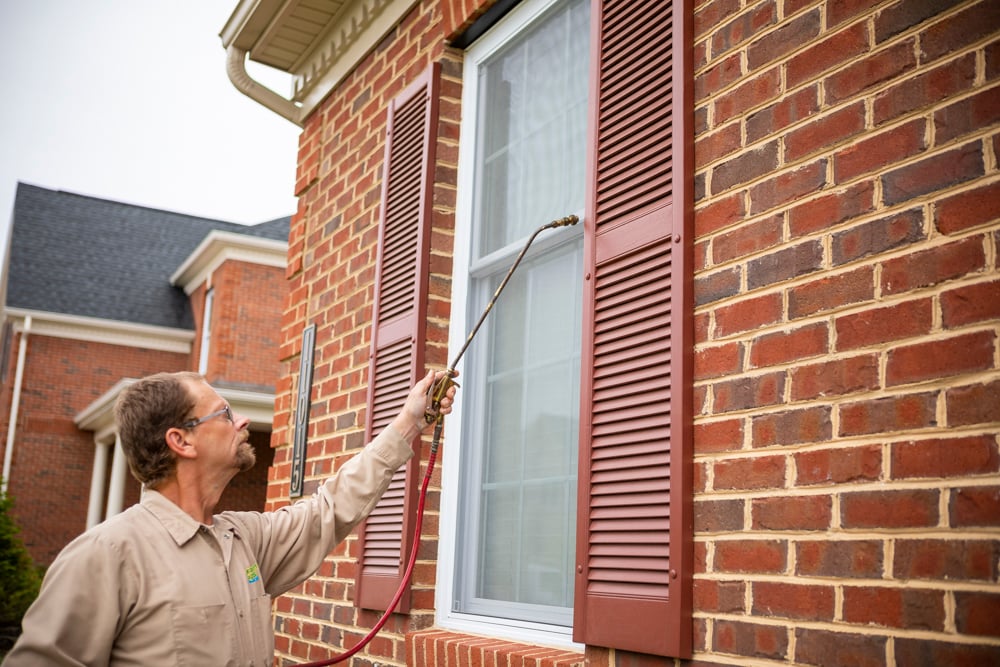
Keep Pests Out of Your New Home in Central and Southern Maryland
You are excited about your new home. Who wouldn’t be?
As you unpack your belongings and settle into your new space, you certainly don’t want to start finding unwanted visitors lurking in your cupboards, in your attic, in your bathroom, or even in your garage.
Set yourself up for a smooth transition with pest control before moving into a new house.
If you suspect bugs in your new home or want to make sure they aren’t present, hire a pest control professional in Central and Southern Maryland.
They can conduct an inspection, check typical pest passageways, help you seal small openings, take care of any infestations, and secure a bug barrier around your house.
Then you can move in worry-free and thoroughly enjoy your new space.
Looking for pest control solutions in Central and Southern Maryland? Get started today with a free quote. We’ll review your options together so you can make a great choice. Then you can just relax in your new home without seeing a bug in sight.
There is a lot to consider when you buy and then move into a new home.
You might want to change the paint color. And maybe the carpeting in the family room could use a thorough cleaning. You probably also want to take down some curtains that don’t match your decor. The list continues to grow and grow.
Guess what? You’re not the only ones who sees your home as a place they can call their own. Yes, bugs are on the hunt for a new secure location to find water and food, as well as safely make bug babies.
That means that food you just unpacked into the pantry smells pretty good – not to mention the safe shelter you provide in your cozy home.
As you buy a home, you may not know what lurks in your new abode – whether you just built it or are buying an existing home. And, trust me, bugs don’t know the difference.
Let’s look at how to pest proof your new home so you can feel confident you’re not moving in with the enemy.
Tips For Optimum Pest Control Before Moving Into a New House
Just like you might be looking for a bigger home for your growing family or looking for something in a better neighborhood or nearer to your child’s school, insects are also out searching.
They crave the safety, security, warmth, and pantry full of food we have. You actually kind of feel for them … almost. After all, it’s not like they ask for your permission to steal a corner of your basement or nest in your walls.
Use This Tool to Compare Your Local Pest Control Companies
Spring brings new blooms and fresh air and a bevy of folks selling and buying real estate. But it also brings out the bugs. And you want to make sure you don’t move you, your family, and all of your belongings into a pest’s den.
Check out these key ways to pest proof your home so you can sleep easier knowing you’ve kept bugs at bay.
1. Yard Cleanup
Bugs, naturally, come from the outdoors in. And, most times, they like to hang out in debris or warm, damp, dark places where they can hide.
Think leaf piles, branch and twig piles, firewood stacks, any outdoor trash. If any of these are near your home, getting inside is just one more step away.
How to keep pests out of your house involves cleaning up outdoor areas so pests aren’t more tempted to move easily indoors. We mean raking leaves, trimming trees, collecting and disposing of trash in sealed containers, and moving those firewood stacks at least 20 feet from your home.
2. Home Cleanup
To insects or mice, imagine how good your home smells and feels. Fresh food, water, and crumbs – it’s like a smorgasbord for bugs.
In fact, this is made worse if food is continually left out or spills aren’t cleaned up, this is a bigger draw for bugs.
 So, before moving into your new home, pest proof your home by giving it a thorough cleaning. You don’t want to inherit pests in a moving transition because the previous owners didn’t clean up like they should have as they were moving out.
So, before moving into your new home, pest proof your home by giving it a thorough cleaning. You don’t want to inherit pests in a moving transition because the previous owners didn’t clean up like they should have as they were moving out.
Then, when moving it, remember to store all food in sealed, plastic containers, including pet or bird food. Clean up floors regularly so they are crumb- and spill-free.
3. Manage Pests Before Moving In
During the building of a new home, the construction phase is when your home is actually most open to invaders. Then you finish building the house around them and close them in.
 So if you’re concerned about pests before moving into your newly built home, you can have an inspection and interior crack and crevice spray done beforehand to ensure pests are managed. We’ve found mice, ants, and other general insects like spiders, crickets, earwigs, and silverfish in newly built homes.
So if you’re concerned about pests before moving into your newly built home, you can have an inspection and interior crack and crevice spray done beforehand to ensure pests are managed. We’ve found mice, ants, and other general insects like spiders, crickets, earwigs, and silverfish in newly built homes.
If you are moving into an existing home, you might notice some suspicious things during your home visits before moving in. Maybe in an attic you notice some mouse droppings. Maybe you saw mouse traps in the garage.
 Those two things give you two different stories: The one is a pest problem that may not be managed and the other a pest problem potentially under control. Having a professional pest control inspector look at your home before you move in ensures whether there’s been any pest problems present and whether they are being actively managed. While seeing a mouse trap in a house you want to buy may be concerning, it’s actually a good sign that the previous owners were on top of any pest activity and actively trying to control bugs.
Those two things give you two different stories: The one is a pest problem that may not be managed and the other a pest problem potentially under control. Having a professional pest control inspector look at your home before you move in ensures whether there’s been any pest problems present and whether they are being actively managed. While seeing a mouse trap in a house you want to buy may be concerning, it’s actually a good sign that the previous owners were on top of any pest activity and actively trying to control bugs.
What you don’t want is to move into a home with an active pest issue. Seeing fresh droppings or even the pest itself is certainly a sign of something still present. Bringing in pest control before moving into a new house can ensure your pest problem is recognized, identified, and managed before it becomes a bigger issue.
4. Crack, Crevice and Barrier Maintenance
One more thing you can do once pests are managed or confirmed not present in your property is to make sure bug superhighways into your home aren’t left wide open.
 Sealing any cracks or crevices around your foundations, windows, basement, siding, and insulation can keep bugs outdoors where they belong.
Sealing any cracks or crevices around your foundations, windows, basement, siding, and insulation can keep bugs outdoors where they belong.
On top of that, a quarterly perimeter pest control treatment outdoors can help pest proof your home. These applications last approximately 3 months and they ensure nothing gets through, particularly as temperatures rise and pest activity increases.

Keep Pests Out of Your New Home in Central and Southern Maryland
You are excited about your new home. Who wouldn’t be?
As you unpack your belongings and settle into your new space, you certainly don’t want to start finding unwanted visitors lurking in your cupboards, in your attic, in your bathroom, or even in your garage.
Set yourself up for a smooth transition with pest control before moving into a new house.
If you suspect bugs in your new home or want to make sure they aren’t present, hire a pest control professional in Central and Southern Maryland.
They can conduct an inspection, check typical pest passageways, help you seal small openings, take care of any infestations, and secure a bug barrier around your house.
Then you can move in worry-free and thoroughly enjoy your new space.
Looking for pest control solutions in Central and Southern Maryland? Get started today with a free quote. We’ll review your options together so you can make a great choice. Then you can just relax in your new home without seeing a bug in sight.
Share This
Topics: Pest Control


